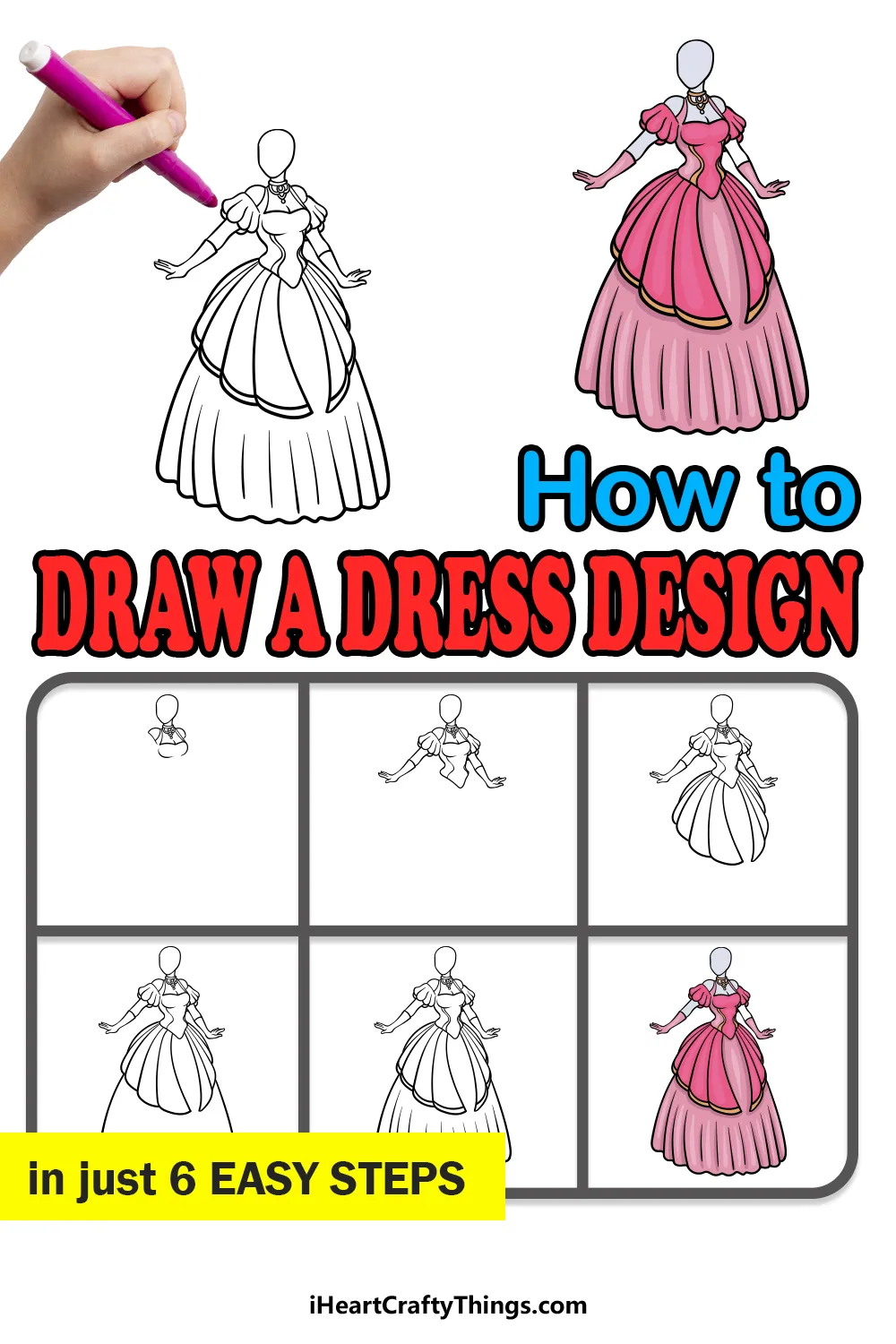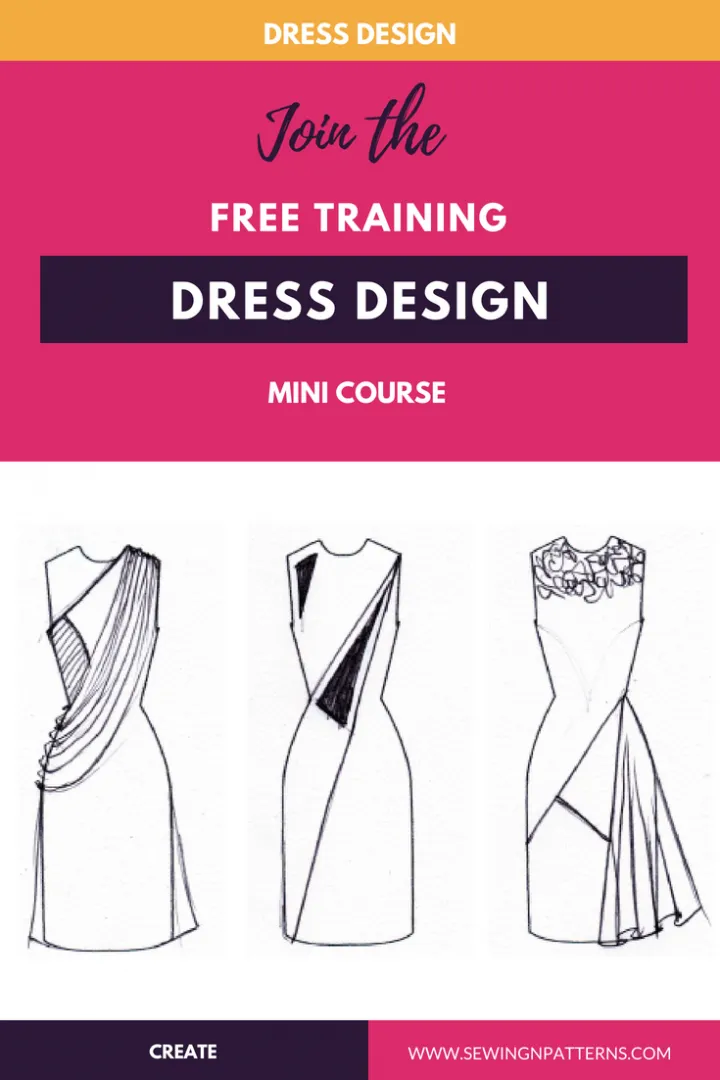Creating your own dress designs at home can be an exciting and fulfilling hobby! Whether you're looking to revamp your wardrobe, make a unique gift, or simply explore your creative side, this tutorial will guide you through the basics of dress designing. No prior experience is necessary—just a passion for fashion and a willingness to experiment. So, roll up your sleeves, and let’s dive into the world of DIY fashion!
Materials Needed for Dress Designing

Before you start sketching your fabulous dress designs, it’s essential to gather all the materials you’ll need. Here’s a handy list to get you set up:
- Fabric: Choose your preferred fabric like cotton, silk, or jersey. For beginners, cotton is a great option due to its ease of handling.
- Thread: Match your thread color with your fabric for a seamless look.
- Scissors: Sharp fabric scissors are crucial for clean cuts.
- Measuring Tape: Accurate measurements are key to a well-fitted dress.
- Pins: Use pins to hold fabric pieces together before sewing.
- Sewing Machine: A basic sewing machine will make the process quicker and easier.
- Pattern Paper: For sketching out your designs and creating patterns.
- Chalk or Fabric Marker: To mark measurements and designs on the fabric.
Here’s a simple table summarizing the materials:
| Material | Purpose |
|---|---|
| Fabric | Base material for the dress |
| Thread | To stitch fabric pieces together |
| Scissors | To cut fabric accurately |
| Measuring Tape | For precise measurements |
| Pins | To hold fabric in place before sewing |
| Sewing Machine | To sew the dress quickly and efficiently |
| Pattern Paper | To create and visualize your designs |
| Chalk/Fabric Marker | To mark fabric for cutting |
With these materials in hand, you’re all set to unleash your creativity and start designing your dream dress!
Also Read This: Learn to Draw from Scratch on Dailymotion
Step-by-Step Guide to Designing a Dress

Designing a dress at home can be a fun and fulfilling experience! Whether you're a beginner or have some sewing skills, this step-by-step guide will help you create your own unique dress.
- Gather Inspiration: Start by browsing fashion magazines, Pinterest, or Instagram for dress styles that catch your eye. Save images or create a mood board to visualize your design.
- Select Your Materials: Choose the right fabric based on the style you want. Cotton is great for casual dresses, while silk works well for formal wear. Don’t forget to get thread, scissors, and other sewing supplies!
- Create a Sketch: Draw a simple sketch of your dress design. Focus on the silhouette, neckline, and any special details like ruffles or pockets. This doesn’t have to be perfect—just get your ideas down on paper.
- Take Measurements: Use a measuring tape to get your bust, waist, hip, and desired dress length. Write these down, as they’ll guide your pattern-making.
- Make or Find a Pattern: You can either create a DIY pattern based on your measurements or find a commercial pattern that matches your vision. Lay the pattern on your fabric and cut out the pieces.
- Sew the Dress: Start sewing your pieces together, following the pattern instructions. Remember to take your time, and don’t hesitate to unpick and redo sections if they don’t look right.
- Finishing Touches: Once sewn, add any embellishments, hem the edges, and give it a good press. Try the dress on and make any adjustments as needed!
Also Read This: How the Shutterstock Premier Account Works and Its Benefits
Tips for Customizing Your Dress
Customization is where your creativity can really shine! Here are some tips to make your dress truly your own:
- Mix and Match Fabrics: Don’t be afraid to combine different fabrics. For instance, a cotton bodice with a tulle skirt can create a playful contrast.
- Add Embellishments: Think about adding lace, buttons, or beads to elevate your dress. These small details can make a big difference!
- Experiment with Colors: Use fabric dye or paint to add splashes of color or unique patterns. Ombre effects or tie-dye can give your dress a trendy look.
- Alter the Fit: Tailoring the fit is essential. Consider adding darts, adjusting the length, or making it more fitted at the waist for a flattering silhouette.
- Incorporate Unique Features: Think about adding features like an asymmetrical hem, cutouts, or pockets. These little touches can set your dress apart.
Remember, the key to customization is to have fun and express your personal style. So, unleash your creativity and enjoy the process!
Also Read This: Mastering Contouring Makeup with a Comprehensive Video Tutorial on Dailymotion
5. Showcasing Your Dress Designs
Once you've created your stunning dress designs, it's time to showcase them! This step is crucial because it allows you to share your creativity with the world and potentially attract buyers or fans. Here are a few effective ways to display your designs:
- Social Media: Platforms like Instagram and Pinterest are perfect for fashion enthusiasts. Post high-quality photos of your dresses, use relevant hashtags like #FashionDesign or #DIYDress, and engage with your audience.
- Online Portfolio: Create a dedicated website or blog where you can display your designs in an organized manner. Include sections for sketches, finished products, and even a 'behind-the-scenes' look at your design process.
- Fashion Shows: If you're feeling adventurous, consider organizing a small fashion show at home or in your community. You can invite friends and family to model your designs, which adds a personal touch.
- Local Markets: Participate in local craft fairs or markets. Set up a booth to display your designs, allowing potential customers to see and feel the fabric.
Don't forget to tell the story behind each design! Sharing the inspiration or process can engage your audience more deeply and create a connection with each piece.
6. Conclusion
Creating dress designs at home can be a fulfilling and enjoyable journey. With the right materials and techniques, anyone can transform their fashion ideas into reality. Remember, the key steps include:
| Step | Description |
|---|---|
| Inspiration | Gather ideas and determine your style direction. |
| Sketching | Create initial sketches to visualize your designs. |
| Fabric Selection | Choose fabrics that suit your design aesthetic. |
| Sewing and Construction | Bring your sketches to life through sewing. |
| Showcasing | Share your work through various platforms. |
Embrace the process, and don't shy away from experimenting! Every stitch counts, and with practice, your designs will only get better. So grab your sewing kit, unleash your creativity, and enjoy the beautiful world of fashion design!